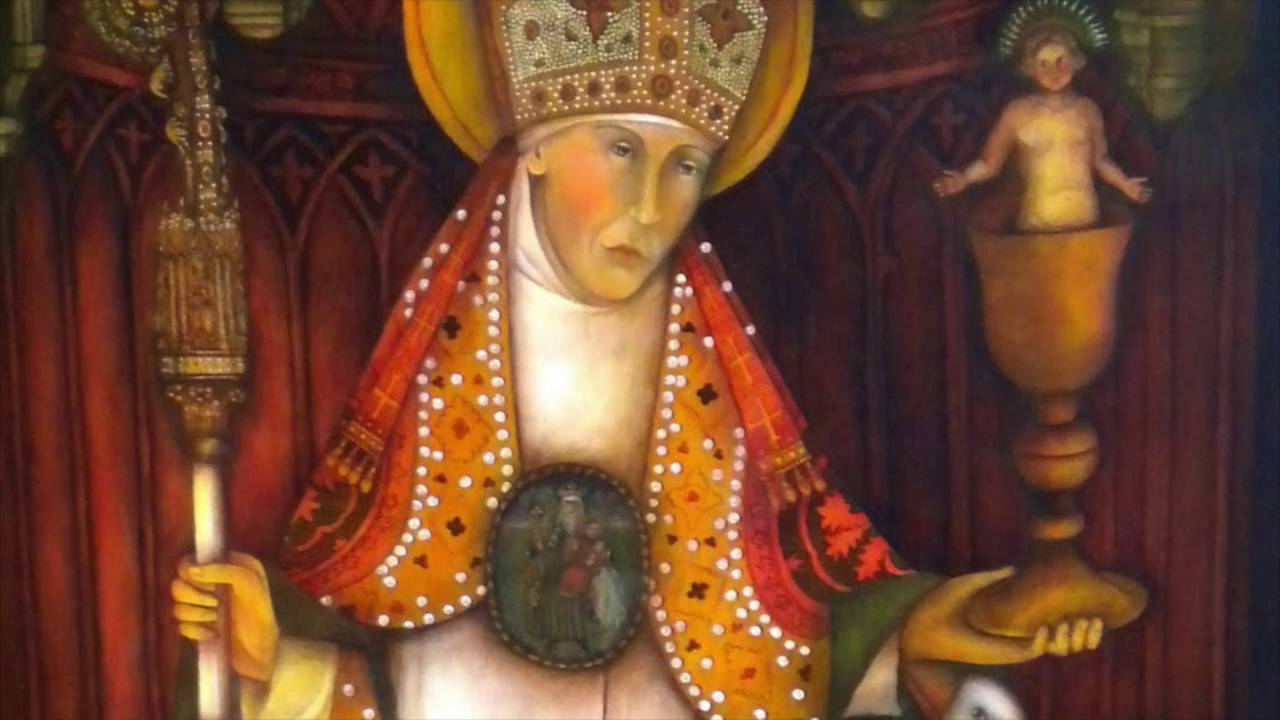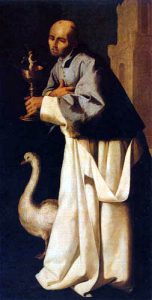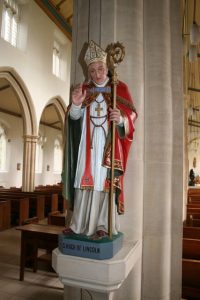
St. Hugh of Lincoln was an abbot and bishop who defended the rights of individuals and of the Church. Hugh was the son of a nobleman, William of Avalon. Avalon was a province of Dauphine in what was then the Holy Roman Empire, and what is now southeastern France. Hugh was born at Avalon Castle in 1140. After his mother Anne died when he was eight, Hugh was sent to an Augustinian monastery at Villard-Benoit, near Grenoble, where he was cared for and educated, and where his military officer father retired to live the life of a religious brother.
ON THE PATH TO THE LIFE OF A RELIGIOUS
Hugh began the path toward full profession as an Augustinian when at fifteen he became a novice. He was ordained a deacon four years later, and was given the position of prior at the nearby Saint Maxim monastery. In 1160, he went on a journey with his superior to the Grande Chartreuse Monastery in the mountains near Grenoble. This monastery was inhabited by Carthusian monks whose religious order had been founded less than one hundred years earlier at this Alpine site. Hugh was attracted to the silent and rigorous atmosphere of prayer and work which are characteristic of this order, and he chose to enter the order. He was ordained a priest at an unknown date.
A CALL TO ENGLAND
The years of contemplation at this monastery were an important part of the formation Hugh would need later in life.
In 1175, King Henry II established a monastery at Witham in southern England as penance for his having St. Thomas Becket murdered. Monks were sent there from The Grande Chartreuse, but after several years the few monks were living in crude huts and the building of the monastery had not yet begun. In 1179, Fr. Hugh’s reputation was made known to the King, and he was summoned to become the abbot of the new abbey and monastery. Upon arriving, Abbot Hugh discovered that the people who had been displaced for the building of the proposed monastery had received no compensation. Troubled by this injustice, he insisted that the King compensate these people before he would take up the role as prior. With time, he became a friend and advisor to the King, even after scolding him for leaving sees vacant (without a bishop) to his financial advantage. Under Abbot Hugh’s leadership, the monastery was built, grew, and flourished. His reputation as a wise and holy man spread throughout England, and even the King, among many others, sought out his counsel. In 1186, he was named Bishop of Lincoln, which was then the largest diocese in all England. He declined this appointment, and accepted it only under obedience to orders of the prior of the Grande Chartreuse.
BISHOP OF A NEGLECTED SEE
The Diocese of Lincoln, north and east of Birmingham, had been without a bishop for more than fifteen years and was in great need of practical and pastoral attention. Bishop Hugh’s devoted work training young priests bore much fruit, and the Diocese was truly renewed in the Faith. His diligence in protecting people’s rights continued when he again chastised the King for displacing people when forests were cleared with no compensation. He also rebuked the King for appointing laity as abbots and bishops, but his manner was so mild and courteous, Henry could not help but comply. He worked to protect the rights of Jewish people, even calming an armed mob bent on murderous vengeance. During the reign of King Richard I, Bishop Hugh refused to contribute to the King’s war against the French in 1197.
AN UNUSUAL PET

Upon his first arrival at Lincoln in 1186, Hugh fed and bonded with a large swan living at the nearby lake. The Swan followed him everywhere in Lincoln. The swan would remain in the middle of the lake when the Bishop was away, but came to the shore at his return. It served as a watchdog of sorts, attacking anyone who came near his master, and even guarding him while he slept. In 1200, Richard I’s successor King John sent Bishop Hugh on a diplomatic trip to France, which had been done several times before. On this trip, Hugh visited the Grande Chartreuse, as well as Citeaux (the motherhouse of the Cistercian Order) and Cluny (the great Benedictine abbey and monastery). This lengthy trip weakened his health. When he returned to England, he was ailing, but able to travel to a meeting in London. There, he collapsed and died several weeks later, on November 16, at age sixty.

St. Hugh of Lincoln was a man both gentle and courageous. He boldly corrected English kings, defending the rights of the Church and the king’s subjects, but showed great fondness for both animals and children. He successfully established the Carthusian order in England, and at his canonization in 1220, was the first of his order to be so honored. In artistic depictions, he is always shown in his white Carthusian habit with a swan at his side. A shrine to his memory is located at St. Mary’s Cathedral at Lincoln, England. He is a patron for sick children and for shoemakers, and his feast day is November 17.
